Have you ever experienced lower back soreness or tightness after a day of heavy squatting or pulling from the ground? Deadlifts are probably the most common culprit when it comes to causing lower back stiffness 24-48 hours after a tough workout. Is this normal? Should you just assume that your back will be sore after you deadlift or squat heavy? The answer is no. You may have good movement patterns, warm up properly and lift with good technique, but still experience some level of discomfort the following day. One answer to this problem might be that you lack the awareness or ability to activate your inner core.
Oftentimes when we think about our core muscles we always picture six-pack abs (or the rectus abdominis – see diagram below). It’s common to think that if your abs are shredded then you have excellent core strength. But in many of the movements that we commonly perform at the gym, such as toes-to-bar, v-ups, GHD sit-ups, hollow holds, etc., you are actually using your outer core muscles, which facilitates trunk movement and provides a broad level of stability.
In contrast, the inner core provides your trunk with stability at a much more detailed level. Picture the inner core as a cylinder that wraps around your vertebrae. The top of the cylinder is the diaphragm (see image below), which sits below the lungs and is your primary breathing muscle. The bottom of the cylinder is the pelvic floor (see image below), which has several different important functions. In relation to the core, the pelvic floor helps the abdominal, hip and back muscles control the movement of the sacroiliac and hip joints, which are important for hinging and squatting. The front and sides of the cylinder are made up of the transverse abdominis (see image below), which is the deepest layer of abdominal tissue and provides support for the lumbar spine. Finally, the back of the cylinder is made up of the lumbar multifidus (see image below), which is an important stabilizer of the lumbar spine as well.
So, now that we have a picture of what the inner core looks like and the different muscles that make it up, why should you care about it? Well, for starters, strengthening the inner core muscles can reduce chances of injury. That back soreness/stiffness that was discussed above? Proper engagement of the inner core muscles can help reduce and eliminate that kind of discomfort. Furthermore, learning how to brace these muscles correctly will help you pull more weight off the floor (think deadlift, clean and snatch) and improve your squat strength. Training your inner core will also help you learn how to breathe better which will increase your engine during conditioning pieces.
One of the best ways to learn how to activate your inner core is to practice breathing correctly – through your belly, not your chest. Most members of the population fall victim to shallow breathing where only the chest and lungs expand during the breath; they take a long inhale (lasting for 5-10 seconds), but the exhale is quick and most of the air is released in a few short seconds.
In order to change the way you breathe, it is important to develop an awareness of how you breathe. Set aside a few minutes a day to focus on deep, symmetrical breathing. Inhale through the nose, expand your abs (or belly), and then exhale through your nose trying to match your inhale tempo. To take it a step further, try to maintain a perfect posture while you complete these breathing sequences. Another breathing technique to practice is called ‘box breathing’. For this method, inhale, hold your breath full, exhale completely and then hold your breath empty. Try to complete the inhale, hold, exhale, hold for the same number of seconds (about 5-10 counts for each). Repeat this breathing sequence 10-20 times.
Rectus Abdominis:
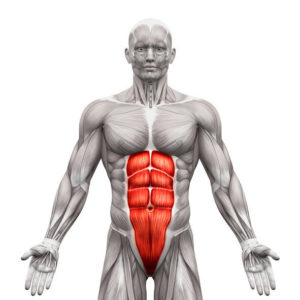
The Diaphragm:
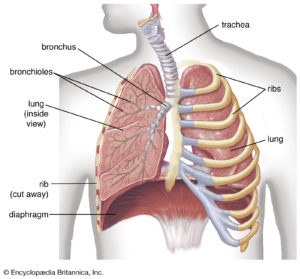
The Pelvic Floor:
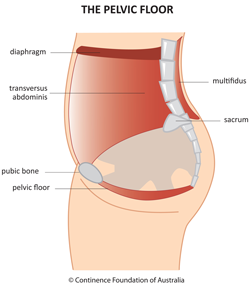
Transverse Abdominis:
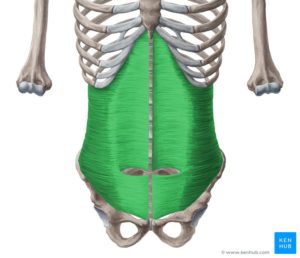
Lumbar Multifidus:
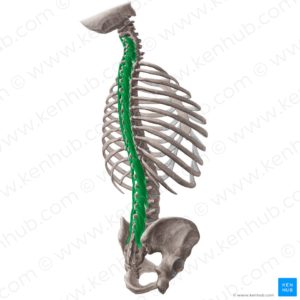
Sources:
https://www.crossfitinvictus.com/blog/inner-core
https://foundationphysio.com/5-basic-functions-of-your-pelvic-floor/
https://corewalking.com/abdominal-muscles-transverse-abdominis-function/
https://breakingmuscle.com/fitness/the-athletes-toolbox-the-lost-art-of-breathing
Transverse Abdominis: Lumbar Multifidus:
Sources:
https://www.crossfitinvictus.com/blog/inner-core
https://foundationphysio.com/5-basic-functions-of-your-pelvic-floor/
https://corewalking.com/abdominal-muscles-transverse-abdominis-function/
https://breakingmuscle.com/fitness/the-athletes-toolbox-the-lost-art-of-breathing
